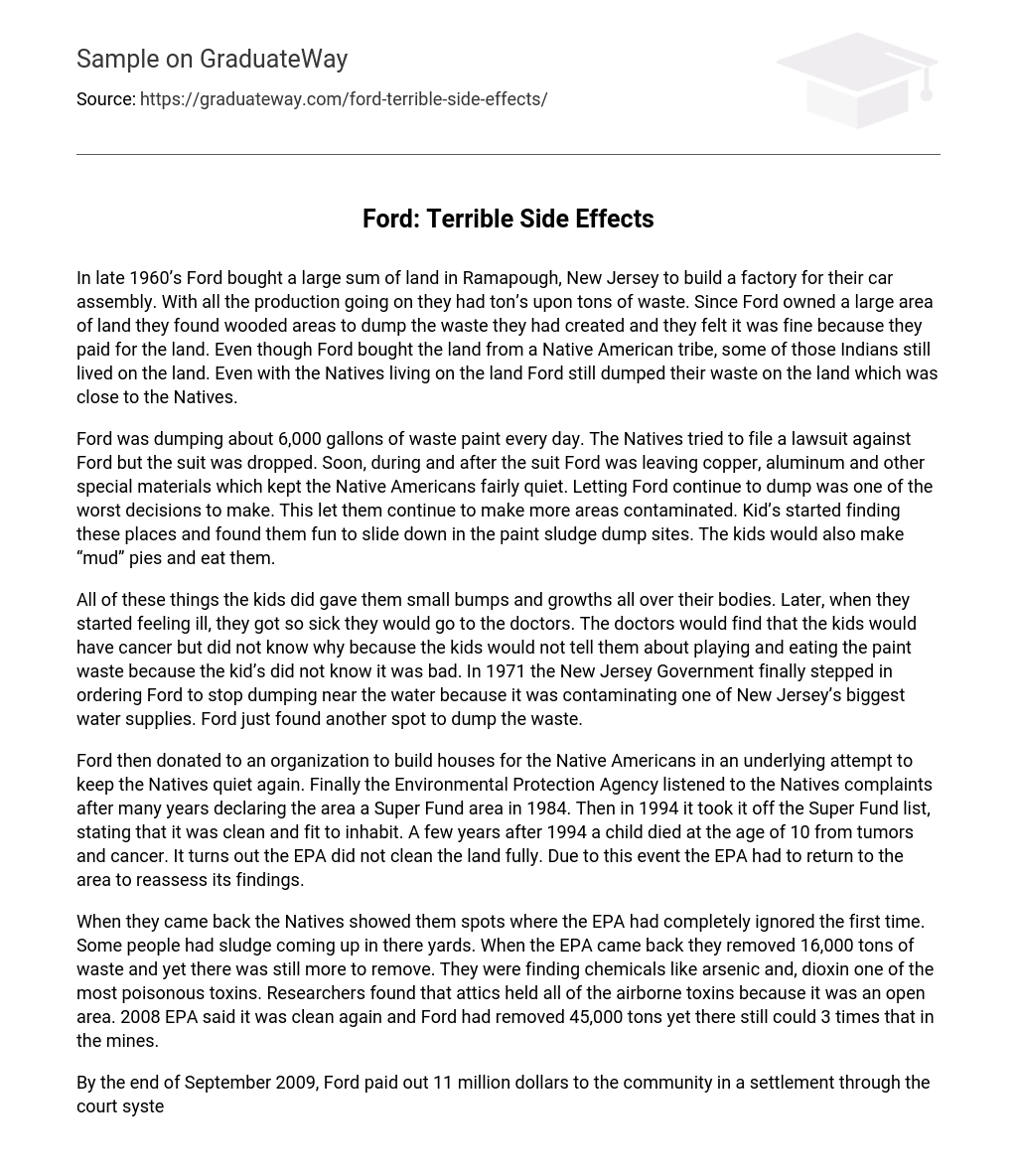Ford bought a large piece of land in Ramapough, New Jersey in the late 1960s to build a car factory. This resulted in a significant amount of waste being produced. Since Ford owned a substantial portion of the land, they decided to use wooded areas as places to dispose of the waste. Their reasoning was that since they had paid for the land, it was acceptable to use it for waste management purposes. It is important to note, however, that Ford acquired the land from an indigenous tribe who still had some people living there. Despite the presence of these Native American residents, Ford went ahead and disposed of its waste near their homes without considering their well-being.
Ford was disposing of approximately 6,000 gallons of waste paint on a daily basis. The Native Americans attempted to initiate legal action against Ford, but the lawsuit was eventually abandoned. Subsequently, Ford deliberately left behind copper, aluminum, and other valuable materials to appease the Native Americans. Allowing Ford to persist in their dumping activities proved to be an incredibly detrimental decision as it resulted in further contamination of various areas. Children soon discovered these locations and found enjoyment in sliding down the paint sludge dump sites. Additionally, they would create and consume “mud” pies using the contaminated materials.
As a consequence of these actions, the children developed small bumps and growths on their bodies which led to worsening symptoms requiring medical attention. The doctors diagnosed them with cancer but were unaware of the cause as the children did not reveal their involvement in playing with and consuming paint waste. In 1971, the New Jersey Government intervened by ordering Ford to cease dumping waste near the water source that was polluting one of New Jersey’s largest water sources. However, instead of obeying, Ford simply identified another location for waste disposal.
Ford donated to an organization for Native American housing, potentially in an attempt to silence them. Eventually, the EPA acknowledged Native grievances and declared the area a Super Fund site in 1984. However, the EPA removed it from the list in 1994, claiming it was now clean and habitable. Tragically, a child died from tumors and cancer a few years later. It was then revealed that the EPA had not fully cleansed the land. As a result, the EPA had to return to reassess their earlier conclusions.
Upon their return, the Native people discovered additional areas in people’s yards that contained sludge, which had been overlooked by the EPA. When these spots were revisited by the EPA, they managed to extract 16,000 tons of waste; however, there was still more waste left to be removed. Highly toxic substances like arsenic and dioxin were among the chemicals found. Additionally, researchers detected significant levels of airborne toxins in attics due to their open structure. In 2008, after Ford removed 45,000 tons of waste, the EPA declared the area clean once again. Nevertheless, it is possible that there are still three times that amount remaining in mines.
In September 2009, Ford paid $11 million to the community in a court settlement, despite denying responsibility for the incidents that occurred. Despite their denial of responsibility, I acknowledge their lack of awareness regarding the harmful effects of their by-products on the environment and human health. However, I still believe their actions were inappropriate as pollution is especially detrimental to children.





